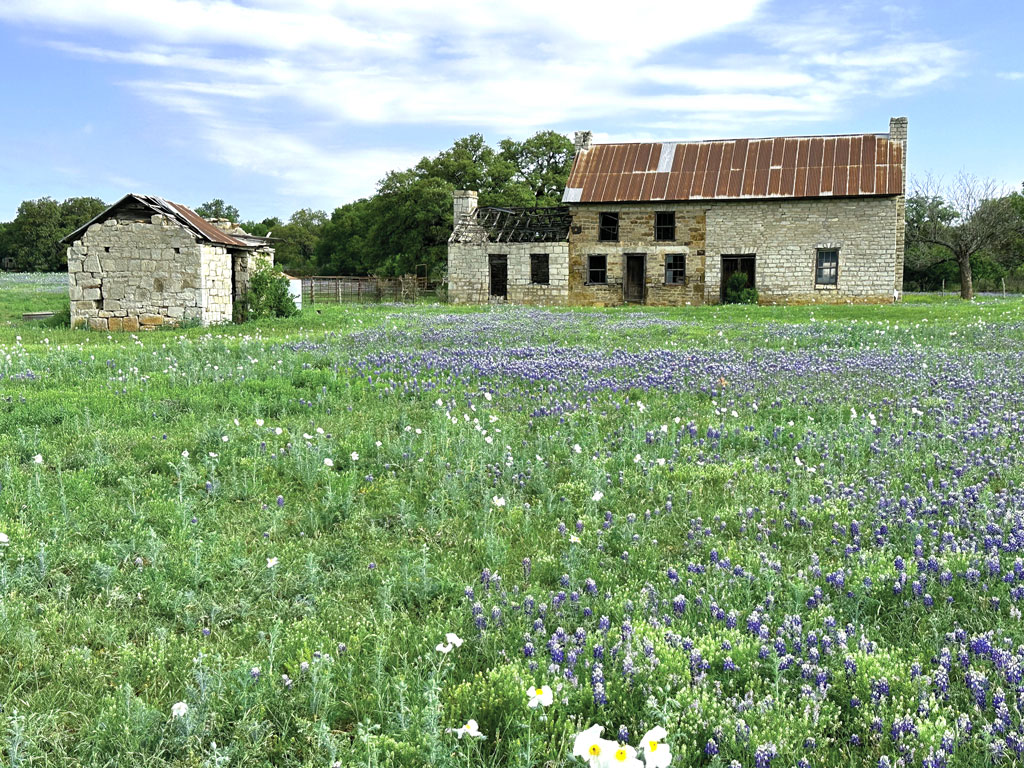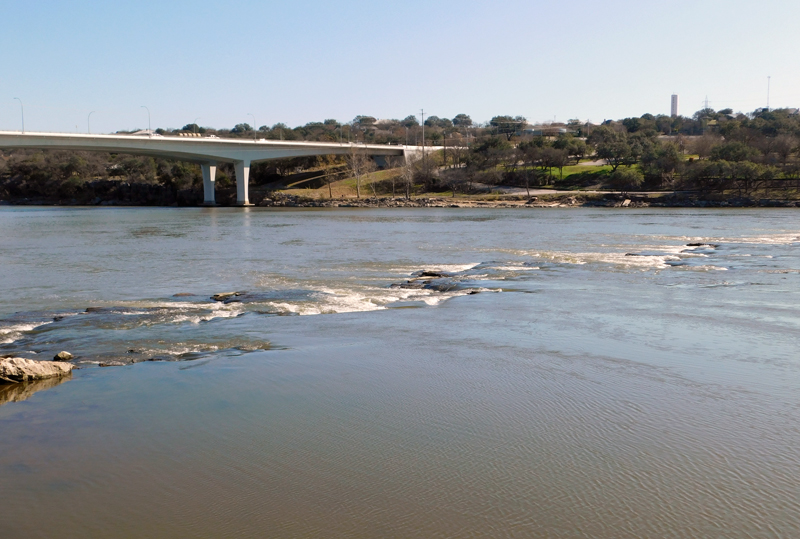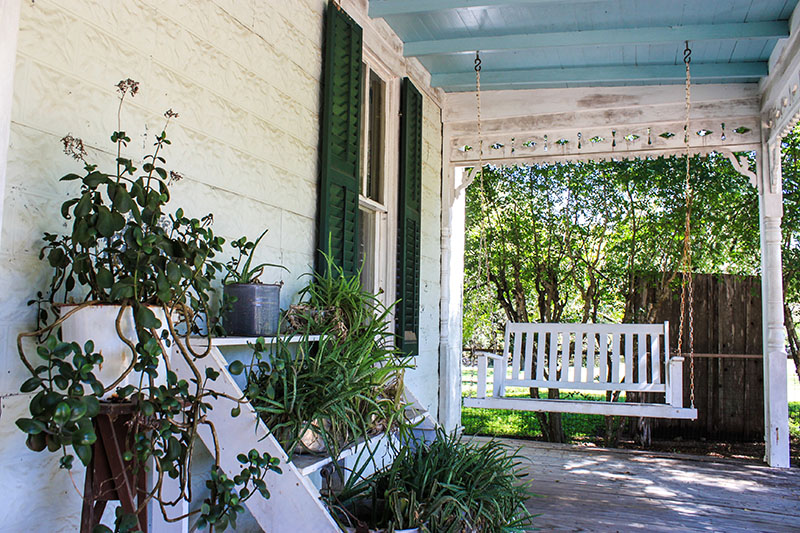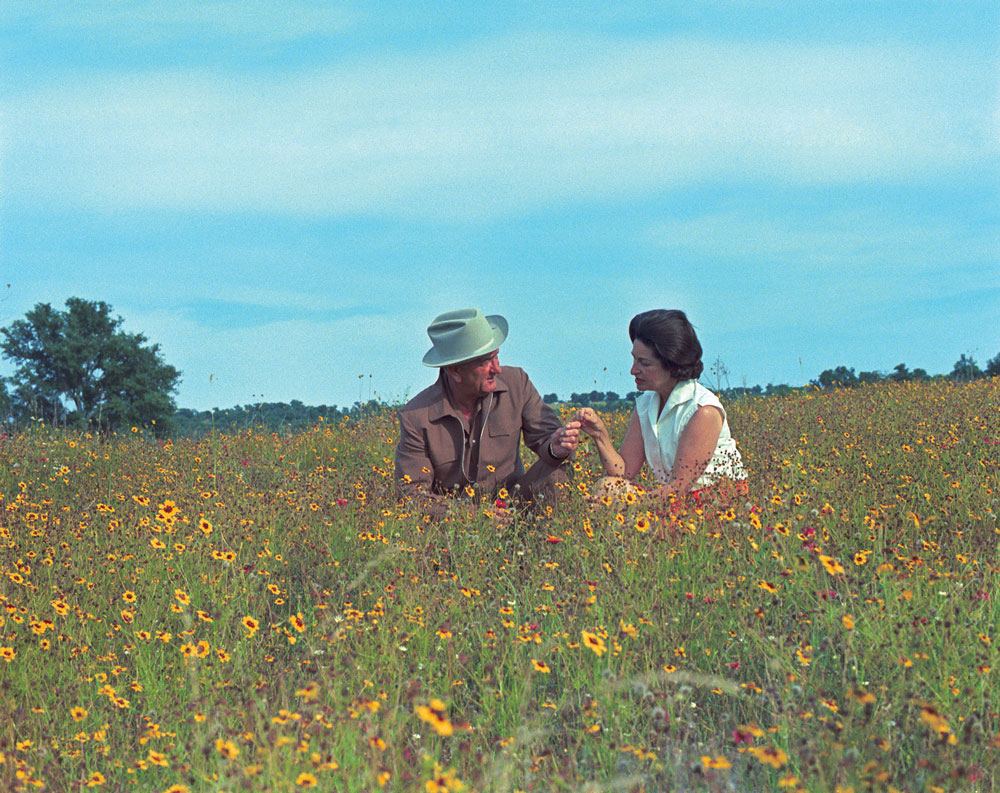
Built in 1908, The Falls on the Colorado Museum, located at 2001 Broadway in Marble Falls, showcases the history and heritage of Marble Falls. Staff photo by Dakota Morrissiey.
The vision of a blind man carved the community of Marble Falls from the limestone and granite that eventually put it on the economic map of a burgeoning new state. Adam Rankin Johnson could see perfectly well in 1854 when he first laid eyes on the bucolic hills surrounding the Colorado River as it snaked its way through the Texas Hill Country. He was working as a surveyor at the time, making note of much more than the coordinates of a plat, such as the topography and the land’s rich resources.
Called to fight for the Confederacy, Rankin returned from the Civil War in 1865, a former prisoner of war who had been blinded by friendly fire. His loss of sight did not affect this native Kentuckian’s ability to see a bright future for his adopted homeland.
Johnson could hear the sound of success in the roaring falls for which the town was eventually named. In that crash of water on rock, he heard the potential to generate electricity and industry. With the help of his son, who served as his eyes and carriage driver, Johnson began laying out city streets on a numbered grid, counting from the river north, all based on his memory of the landscape.
Although the area mapped was named Marble Falls, the river water did not actually flow over marble. The limestone riverbed glittered like marble when wet, leading to its incorrect moniker. Many people, however, called the area “The Blind Man’s Town.” Fortunately, the name Marble Falls is the one that stuck.
FLAMES OF FORTUNE
Marble Falls got its first lucky break from tragedy: a fire that completely destroyed the original state capitol building in Austin in 1881. While Texas Gov. John Ireland wanted to build a new structure from limestone, locals George Lacy, Dr. W.H. Westfall, and N.L. Norton lobbied for a much more durable material.
The three men owned the granite batholith northwest of Marble Falls’s center. They traded Texas legislators free granite for a railway spur from Burnet, which literally put Marble Falls on the map. A decision to use free convict labor to actually mine the granite created waves that eventually reached the shores of Scotland. When the motherland sent skilled stonecutters to help the untrained convicts, union leaders tried to stop them as they stepped off ships in New York and Galveston, but to no avail.
Johnson used the impetus of the granite mining operation to form the Texas Mining and Improvement Co. The official birthday of the city of Marble Falls is based on the creation of that entity, which occurred on July 6, 1887. Within a week, Johnson held a public sales event on a grandstand in the center of town. Some 3,000 people showed up to buy lots, which sold for $75 to $750.
As the tracks were being laid for the railroad spur, George and Elizabeth Roper built the Roper Hotel, which still stands at 707 Third St. on U.S. 281. It now houses businesses and was once a restaurant.
The train came in 1889 followed by a depot, which became the center of town activity. The depot was moved in 1976 to serve as a visitors center. It is now home to Capital Area Rural Transportation System.
TM&I also established the Ice, Light and Water Co. The concrete bones of that facility can still be seen on the north shore of Lake Marble Falls just below and west of the U.S. 281 bridge. The facility was completed in 1893, powering the city as well as an adjacent textile plant, part of Johnson’s original vision for the area. He planned to make Marble Falls the economic center of a thriving cotton and textile industry.
An iron and wood toll bridge supplemented ferry traffic to move people and supplies across the river along what is now the city’s main thoroughfare. A public protest against tolls led Burnet County officials to purchase the bridge and stop charging money to cross.
Families looking to farm, ranch, or own a business that catered to agriculture began to move in around the turn of the century. Johnson sold land to build them a school: Marble Falls Alliance University. That building, too, still stands.
Thousands of Marble Falls residents were educated in the Old Granite School. It became home to the newly formed Marble Falls Independent School District in 1908. Although it was mostly converted to house the district’s administrative offices in 1982, students still attended classes there until 1987. It is now The Falls on the Colorado Museum.
HISTORIC HIGHLIGHTS
As the town’s population grew from about 300 at the turn of the 20th century to today’s count of just over 6,500, the city obviously went through some changes.
Historic highlights include:
• installing the first telephone in 1893;
• electing Ophelia “Birdie” Crosby Harwood as the nation’s first female mayor in 1917, three years before women could even vote;
• the controversial cutting down in 1924 of 100-year-old oak trees that shaded the center of Main Street;
• paving streets for the first time in 1936;
• building the smallest of the six Colorado River dams, Max Starke, which created Lake Marble Falls in 1949-51;
• naming streets and putting up the first street signs in 1956;
• moving post office box addresses to street addresses and starting home mail delivery in 1971.
Businesses have come and gone, but some, like Blue Bonnet Cafe (named for blue hats, not the flower), remain. Blue Bonnet has been serving its traditional country cooking since 1929. Fast food restaurants have joined in the task of feeding the many residents, vacationers, and shoppers who converge on the city year-round. With the addition of Walmart, Bealls, Ross, and an expanded H-E-B grocery store, the city has become the region’s shopping mecca.
The U.S. 281 bridge also marks the passing of time. After floods swept away the old iron and wood bridge in 1935, the Texas Department of Transportation replaced it with a two-lane concrete and steel bridge the next year. That was widened to four lanes in 1973 and imploded in 2013 to make way for its replacement, already half-built and in use at the time.
As the city continues to grow, the old granite mountain continues to be shipped out in pieces as construction material for everything from jetties to skyscrapers. Not to worry: Geologists say it will take another 900 years to completely deplete that resource.
Johnson’s vision for the city might not have been spot on, but the area has grown in population and popularity with a rich history driven by his foresight. At 130-plus years, the city is still young, the buildings and dams that formed it mere specks on the land with some of the oldest exposed rock in the state. Geologists estimate that Marble Falls is actually closer to 1.36 billion years old.
Now, that’s history.












